Map Design: Joseph Basnight; Map Data: O’Connor et al., 2019
(Not yet separately assessed by IUCN Red List, but based on current data, when assessed they fall into these categories.)
THE SILENT
EXTINCTION
There are only 117,000 giraffe alive in the wild. In fact, three of the four species of giraffe are now endangered or critically endangered. Giraffe have already gone extinct in 7 African countries.*
This map shows the dramatic loss of giraffe habitat with the colored areas being the only areas where giraffe still exist today. Gene pools and giraffe rangelands are shrinking dramatically.
*Countries include Burkina Faso, Guinea, Eritrea, Nigeria, and Senegal (among others)
Join us in preventing the silent extinction of giraffes and protecting their future in the wild for generations to come.
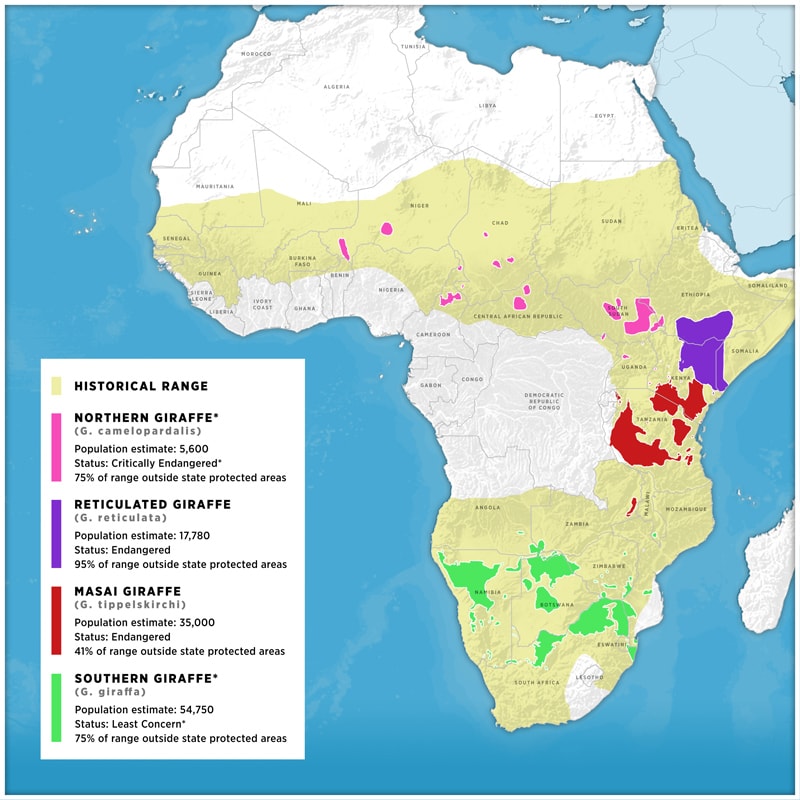
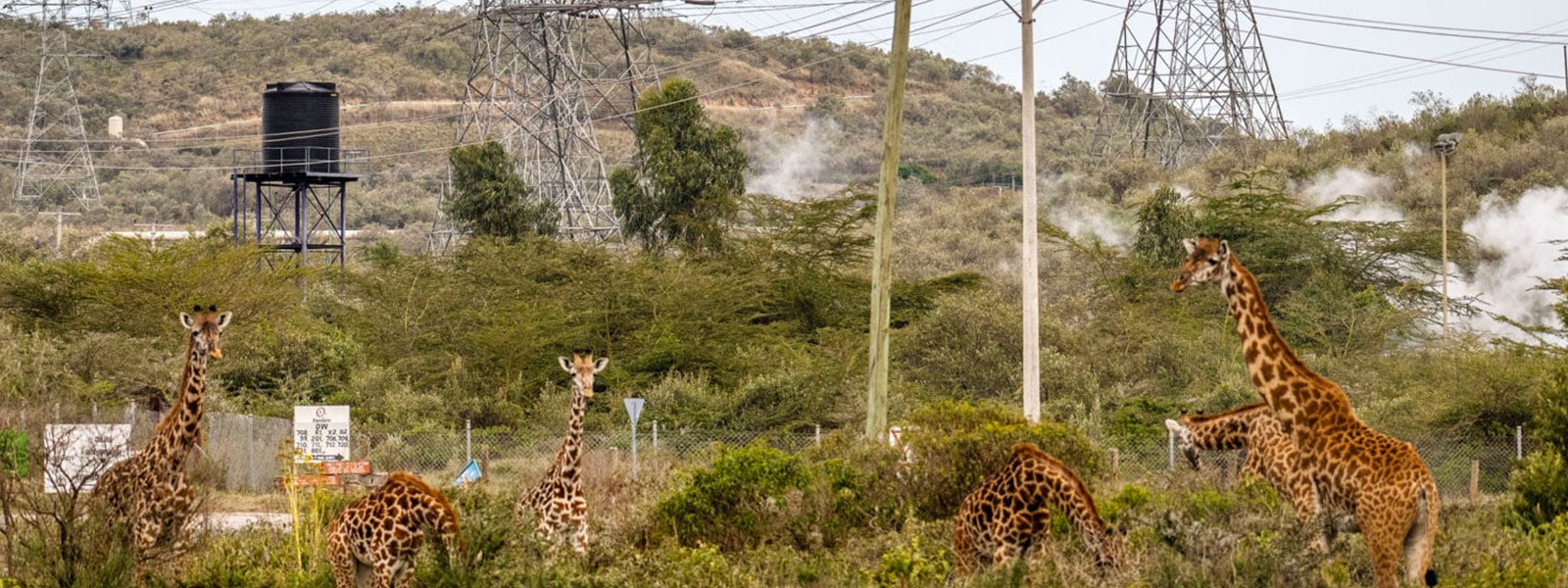
Increasing infrastructure has led to a dramatic loss of giraffe habitat.
What’s Behind the Decline?
Loss of Habitat
As human populations expand, more food, housing, and income sources are needed. Giraffes thus lose their natural habitat to crop farming, livestock grazing, and housing developments.
Commercial Bushmeat Poaching
While giraffe are still occasionally hunted for their pelts and tails, commercial bushmeat poaching is an increasing and horrifying cause of population declines.
Human Conflict
Wildlife sometimes clash with farmers over crops, leading to conflicts and sometimes retaliation against the animals. Giraffe love mangoes and mango flowers and at times get in trouble by crop raiding mango farms.
Armed Conflict and Civil Unrest
War-torn regions disrupt giraffe habitats and limit conservation efforts.
Infrastructure Development
Activities like road and railway construction or mining and quarrying expansion cause habitat degradation and fragmentation as well as encroach upon giraffe territory.
Population Isolation
As rangelands shink, giraffe groups become isolated, hindering breeding and limiting genetic diversity.
Accidental Deaths
Giraffes face dangers like collisions with vehicles, entrapment in fence wires, and electrocution.
Giraffe Population and Conservation Status by Species
Information based on data from The International Union for Conservation of Nature (IUCN)
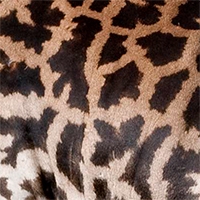
Masai Giraffe
Once the most populous giraffe species with an estimated 71,000 individuals three decades ago, Masai giraffe now face a stark reality. Less than half of that number are in the wild today. Masai giraffe can be found across Kenya and Tanzania, with a small, isolated population in northeastern Zambia known as the Masai Thornicroft.
Scientific Name: Giraffa tippelskirchi
Population: Approximately 35,000 Masai giraffes remain
IUCN RED LIST STATUS:
- Masai are ENDANGERED
- Masai Thornicroft are VULNERABLE
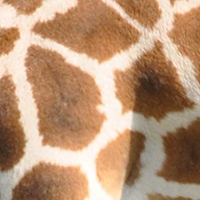
Northern Giraffe
Of the three subspecies of the Northern Giraffe known today, two are critically endangered, and one is considered vulnerable.
Three subspecies exist across Eastern and Central Africa – the Kordofan giraffe, the Rothschild’s giraffe (now believed to be synonymous with the Nubian giraffe), and the West African giraffe. The Northern giraffe is especially at risk due to war-ravaged countries and fragmented habitats.
Scientific Name: Giraffa camelopardalis
Subspecies: Kordofan – G. c. antiquorum │ Rothschild’s (Nubian) – G. c. camelopardalis │ West African – G. c. peralta
Population: Approximately 5,600 Northern giraffes remain
Subspecies: Kordofan – 2,000 │ Rothschild’s (Nubian) – 3,000 │ West African – 600
IUCN RED LIST STATUS:
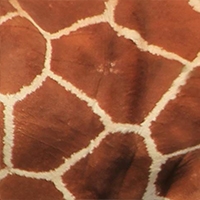
Reticulated Giraffe
Restricted to Northern Kenya, with small populations in Ethiopia and Somalia, numbers of Reticulated giraffes have dropped by more than half in the last three decades.
Scientific Name: Giraffa reticulata
Population: Approximately 15,780 Reticulated giraffes remain
IUCN RED LIST STATUS: Endangered

Southern Giraffe
A beacon of hope in the giraffe conservation story, Southern giraffes make up over 50% of Africa’s total giraffe population.
One subspecies, the Angolan giraffe, was once locally extinct in Angola but has experienced a remarkable recovery due to reintroduction programs. Angolan giraffe populations have tripled over the past three decades!
Scientific Name: Giraffa giraffa
Subspecies: Angolan – G. g. angolensis │ South African – G. g. giraffa
Population: Approximately 54,750 Southern giraffes exist today
Subspecies: Angolan: ~17,750 │ South African: ~37,000
Status: Improving.
IUCN RED LIST STATUS:
- Angolan giraffe – LEAST CONCERN
- South African giraffe – NOT ASSESSED ‡
‡Nubian giraffe not yet assessed by IUCN as a single subspecies, but would be categorized as Critically Endangered. The South African giraffe has not been assessed by IUCN, but it is likely categorized as Least Concern.
†IUCN Red List categorizes West African Giraffe as Vulnerable because of the Red List assessment criteria, and the population of WA Giraffe have increased from 49 in 1995 to 600 today, a huge improvement. But WA Giraffe are still the most imperiled type of giraffe, and are on the edge of extinction.